The Toyota logo is one of the most recognizable symbols in the automotive world, representing innovation, reliability, and global success. Over the decades, Toyota has carefully refined its emblem to reflect both its Japanese heritage and its forward-looking vision.
From its earliest wordmark designs in the 1930s to the iconic overlapping ellipses introduced in 1989, the logo has continuously evolved to match the brand’s growth into a worldwide leader in mobility.
This is why we’ll take some time and explore the history and evolution of the Toyota logo, its story of design, and journey of legacy, symbolism, and the values that have made Toyota a trusted name across generations.
The beginning of a new start: 1935-1949
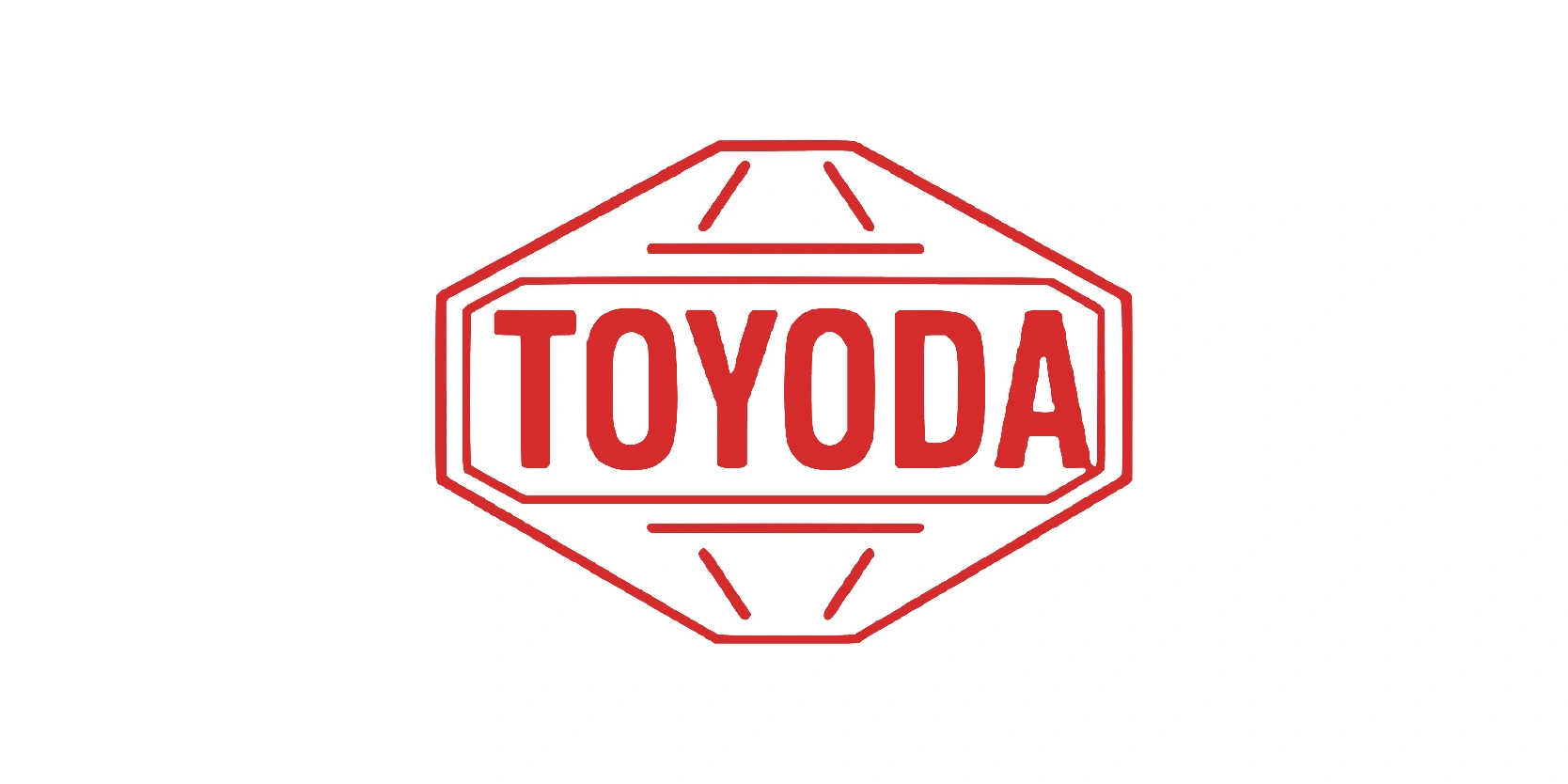
The very first Toyota logo dates back to 1935, when the company was still known as Toyoda Automatic Loom Works before officially becoming Toyota Motor Company. This early emblem was a simple red wordmark featuring the name “Toyoda” written in Japanese katakana characters. It reflected the founding family’s surname and symbolized the company’s origins in Japan’s textile industry.
In 1936, Toyota held a public design contest to create a new logo that would represent its automobile division. The winning design featured the word “Toyota” inside a red diamond-shaped border. This marked the official transition from “Toyoda” to “Toyota,” a change made because the new spelling was easier to pronounce internationally and written in Japanese with eight brush strokes, considered a lucky number symbolizing prosperity.
The first logo was bold, simple, and nationally rooted, laying the foundation for Toyota’s identity before evolving into the globally recognized emblem we see today.
1949-1989

The Toyota logo used between 1949 and 1989 marked a long era of consistency as the brand established itself as a global automaker. During this period, Toyota primarily used a simple wordmark design, with the company’s name spelled in bold, uppercase letters. Clean and straightforward, it projected professionalism, reliability, and accessibility, qualities that became closely associated with Toyota’s identity worldwide.
Unlike later versions with symbolic elements, this wordmark-focused logo emphasized clarity and brand recognition at a time when Toyota was rapidly expanding beyond Japan. It appeared in both English lettering (“TOYOTA”) and Japanese katakana, depending on the market, helping to strengthen the company’s international presence.
This was also the era when Toyota launched many of its most famous models, such as the Corolla (1966) and Land Cruiser, which carried the wordmark proudly. By 1989, Toyota was ready to adopt a more modern, symbolic identity, introducing the now-famous triple-ellipse logo that reflected its global vision.
1958-1969

The Toyota logo used between 1958 and 1969 reflected the company’s growing global presence and its shift toward a stronger, more universal brand identity. This version featured a simple wordmark, with the name “TOYOTA” written in bold, all-capital serif letters. Its clean and professional appearance projected reliability and stability, qualities Toyota was eager to associate with its cars as it expanded into international markets.
During this era, Toyota began making a significant impact in the United States and other parts of the world with models like Land Cruiser and Corolla. The straightforward lettering was easily recognizable and worked well across different languages and cultures, helping Toyota establish trust among a diverse customer base. While it lacked symbolic elements, this minimalist design served its purpose effectively, laying the groundwork for the evolution toward the more iconic logos that would follow in later decades.
1969-1978
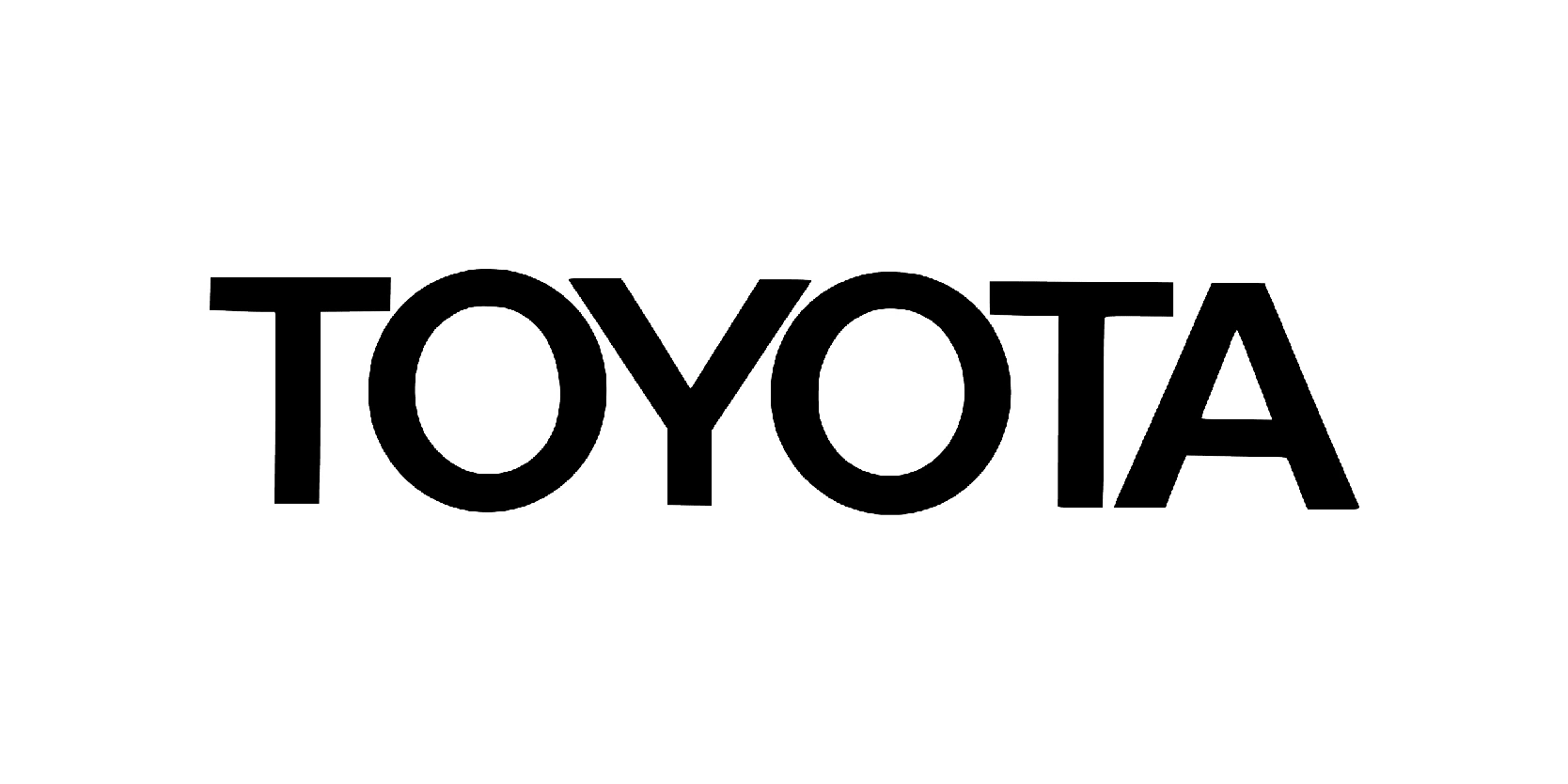
The 1969-1978 Toyota logo marked a bold step in modernizing the brand’s visual identity. Moving away from the more traditional serif lettering of the past, Toyota introduced a sleeker, sans-serif wordmark. The letters were thick, geometric, and evenly spaced, with a subtle emphasis on symmetry and clarity.
This change reflected the company’s desire to appear more innovative and forward-looking, aligning with its rapid rise as a global automotive and forward-looking, aligning with its rapid rise as a global automotive leader during the 1970s.
The minimalist yet powerful wordmark conveyed confidence and reliability while remaining easy to read across advertising, signage, and vehicle badges. By adopting a clean and contemporary typeface, Toyota positioned itself as a modern automaker capable of competing not only in Japan but also in expanding international markets.
This logo symbolized progress, growth, and adaptability, values that helped Toyota solidify its reputation worldwide before transitioning to its next evolution in the late 1970s.
Logo variation 1: 1978-present
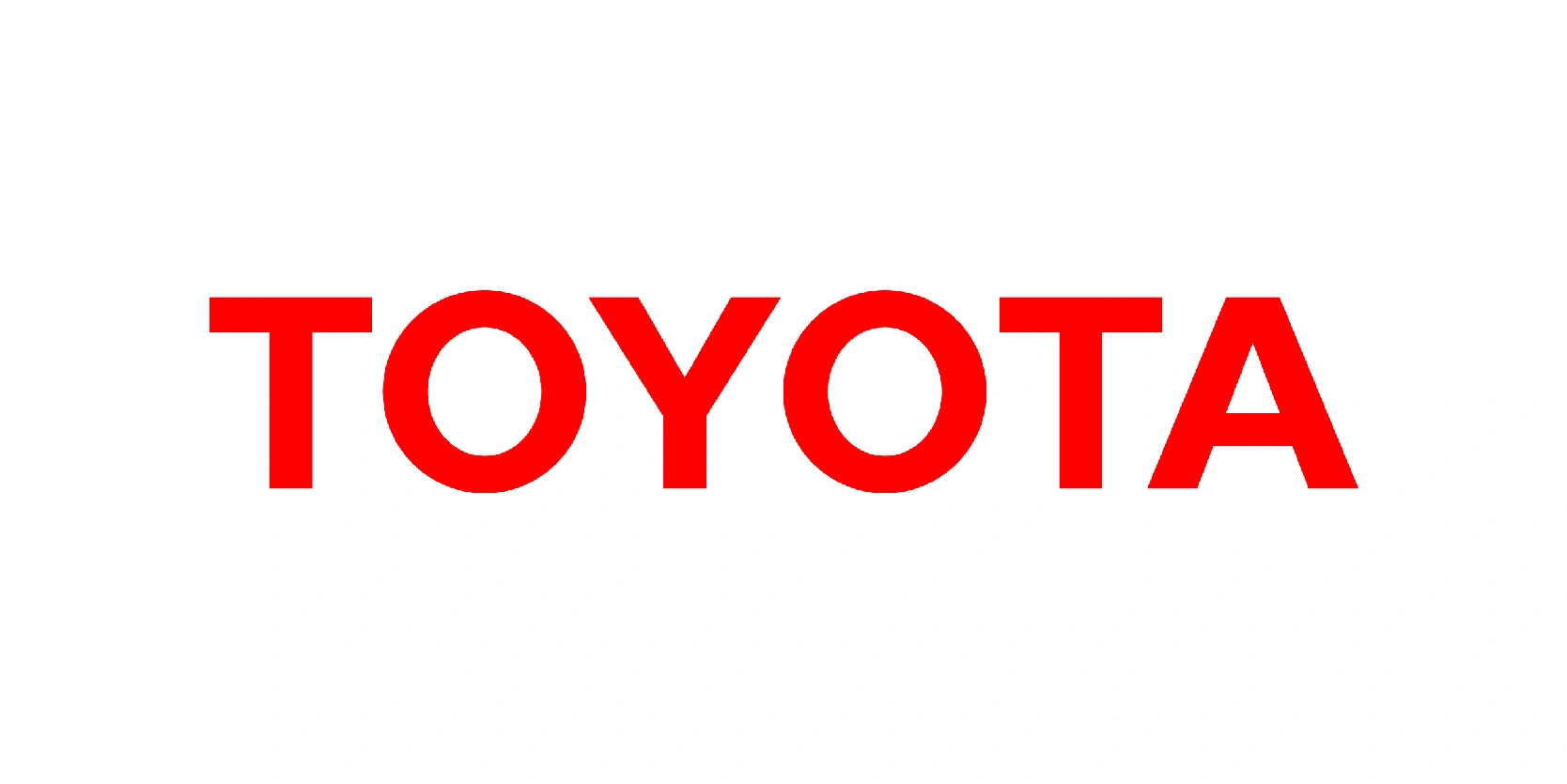
Since 1978, Toyota has undergone many different variations of its logo that it uses on different car models and for different scenarios. The 1978 logo introduced the bold red wordmark that remains a key part of the brand’s identity today. Unlike earlier versions, which relied on black lettering, this design used a striking bright red color to symbolize energy, passion, and innovation. The clean sans-serif typeface was retained from the previous era, but the red tone gave it a more dynamic and recognizable presence.
This wordmark reflected Toyota’s growing dominance in the global automotive industry, aligning with its reputation for reliability and modern engineering. The vivid red also conveyed a sense of excitement and accessibility, appealing to both domestic and international audiences.
Logo variation 2: 1989-present
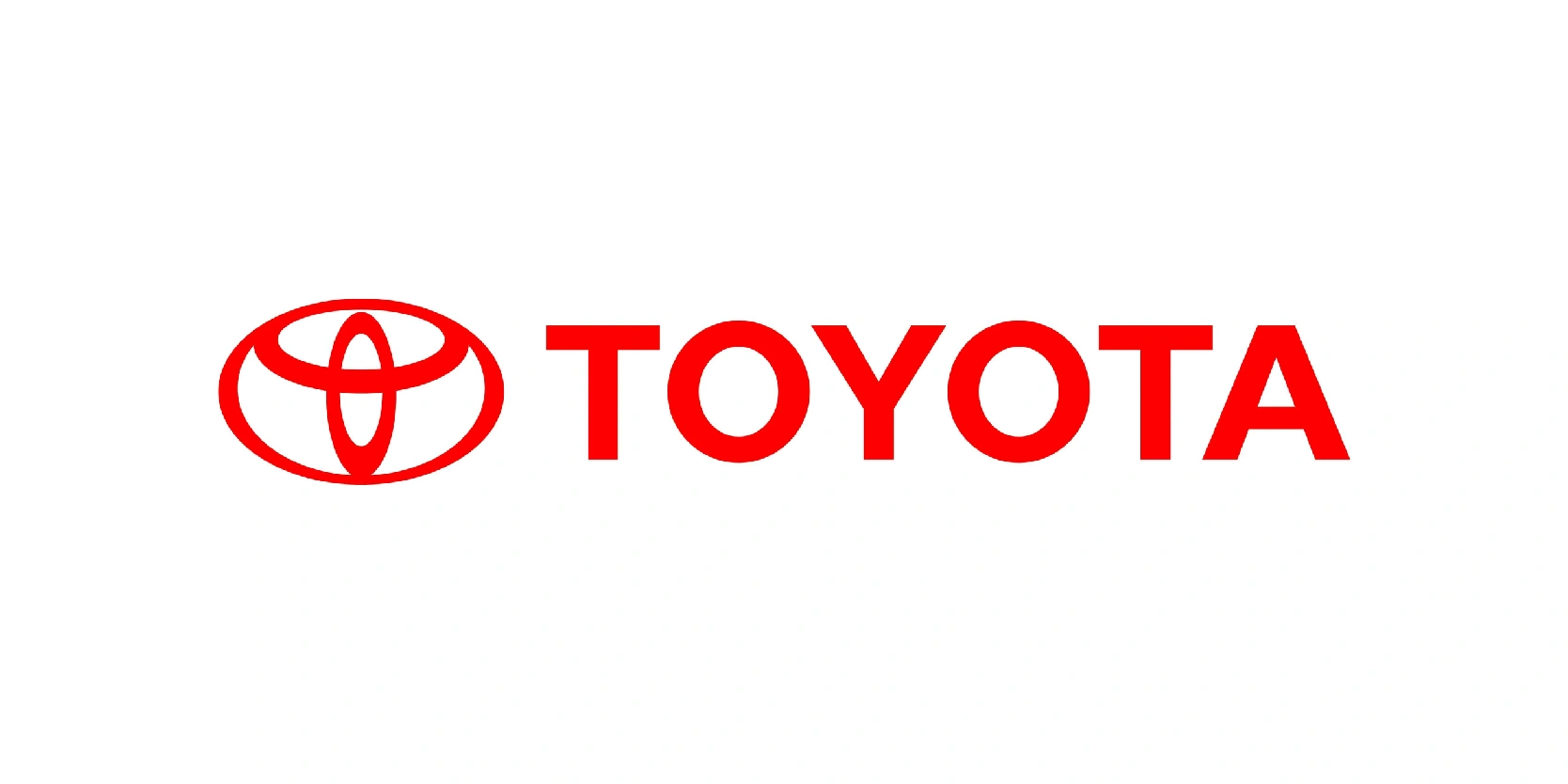
In 1989, Toyota introduced its most iconic logo to date, three-ellipse emblem, which continues to represent the brand worldwide. This symbol consists of two overlapping ellipses forming a stylized “T” inside a larger oval. Each element has a deep meaning: The two inner ellipses symbolize the heart of the customer and the heart of Toyota, while the outer ellipse represents the global expansion and endless opportunities of the company. The overall design reflects trust, unity, and innovation.
The polished chrome look gave the emblem a premium, modern appeal, aligning with Toyota’s push into global markets during the late 1980s and 1990s. It also made sure instant recognition across vehicles, dealerships, and promotional materials. Unlike previous text-only logos, the three-ellipse mark became a universal brand identifier, transcending language barriers.
More than three decades later, it remains one of the most recognizable automotive logos in the world, symbolizing Toyota’s legacy of quality and forward-thinking engineering.
Logo variation for the United States: 1989-present
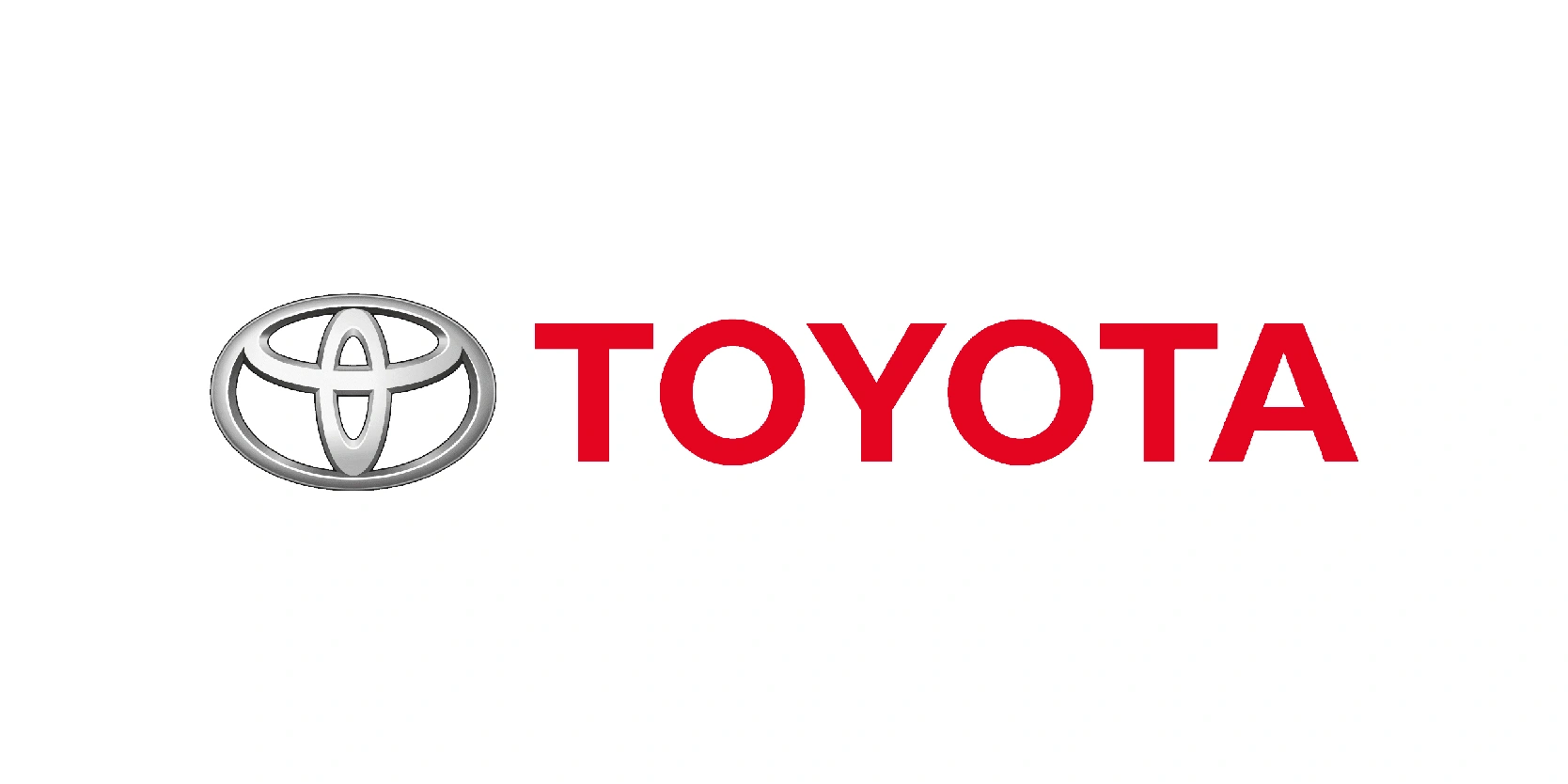
In 2019, Toyota introduced a modernized U.S logo variation as part of a global branding refresh, designed to align the company’s image with the digital era. Unlike the traditional chrome emblem, this version is a flat, minimalist design that removes 3D effects and shading, favoring a sleek two-dimensional look. The overlapping ellipses remain at the core, symbolizing the bond between customers, products, and global opportunities. However, the flat design enhances legibility on digital platforms, apps, and marketing materials, where clarity and adaptability are key.
This U.S variation often appears in black or red, paired with the bold “TOYOTA” wordmark, giving it a stronger and more contemporary presence. It reflects the brand’s forward-thinking identity while maintaining its heritage. By embracing flat design, Toyota ensured its logo would remain versatile and instantly recognizable across print, web, and mobile platforms, a strategic move for a consistent and fast-paced digital marketplace.
Logo variation for Europe: 2020-present

In 2020, Toyota rolled out a redesigned European logo variation, aligning with the trend of flat, minimalist branding across the automotive industry. This version abandons the traditional 3D chrome effects of the 1989 emblem and embraces a sleek, two-dimensional outline of the iconic three ellipses. The design is usually presented in monochrome, most often the symbol is black on a white background.
This minimalist approach also reflects Toyota’s transition toward innovation, sustainability, and electrification in the European market. The absence of shading and text allows the symbol to stand strong on its own, emphasizing recognition without words. With this move, Toyota modernized its identity in Europe, keeping the brand visually relevant while staying true to its heritage.
The evolution and history of Toyota reflect more than visual redesigns
The history and evolution of the Toyota logo reflect more than just visual redesigns, they tell the story of a brand growing into a global leader. From its early wordmark beginnings to the introduction of the three ellipses in 1989, and later the minimalist digital-ready versions from different markets, each transformation symbolized Toyota’s pursuit of innovation, adaptability, and trust.
The logo’s core meaning, representing the unity of customers, products, and tech advancements remains unchanged, reinforcing Toyota’s values across generations.
By modernizing its identity while preserving its legacy, Toyota has ensured its emblem is not only instantly recognizable but also timeless. Today, the Toyota logo stands as a powerful symbol of quality, reliability, and forward-thinking mobility, proving that thoughtful design evolution can shape a brand’s lasting legacy.
